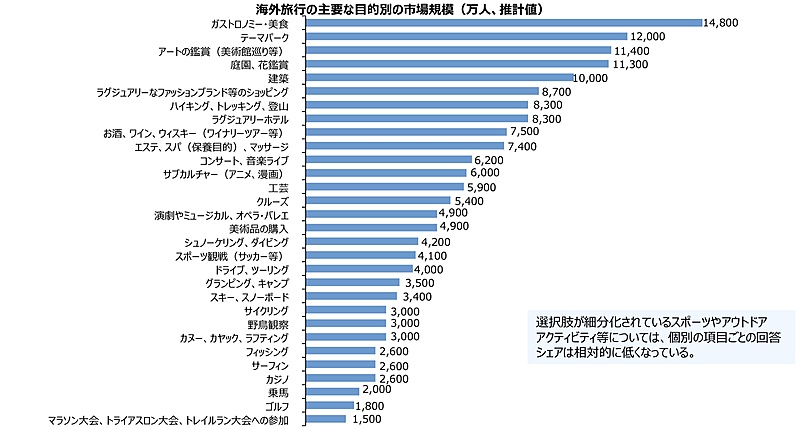
Japan National Tourism Organization (JNTO) revealed the results of the latest survey on overseas travel trends in 22 focus markets to grasp each market’s scale, position of Japan as a tourist destination or possibility to lure international visitors to local regions.
The survey results find that potential visitors to Japan are estimated at about 330 million out of the total population of 4.5 billion in 22 focus markets.
The survey results also show visit frequencies by market. In the largest market China, more than half of overseas travel experiences have not visited Japan before, while about 40% of overseas travel experiences in Taiwan and Hong Kong have visited Japan four times or more.
In Southeast countries except Singapore, 70% to 80% of overseas travel experiences have not visited Japan before. In long-haul markets, more than 60% of overseas travel experiences in U.S. and more than 40% of those in Australia have visited Japan before, and in other long-haul markets except U.S. and Australia, more than half have not visited Japan.
Regarding awareness of Japan as a leisure destination in the four stages of ‘non-recognition,’ ‘recognition,’ ‘interest’ and ‘in comparison to choose,’ people who know tourist spots or activities in Japan are interested in them as well in many East Asian and Southeast Asian markets.
On the contrary, the ratio of ‘non-recognition’ was high in the long-haul markets, especially high in U.K., Germany and Middle East.
More than 70% of people in East Asian and Southeast Asian markets are willing to visit local regions in Japan, while the ratio is relatively lower in the long-haul markets, even in U.S. and Australia.
The survey on travel purposes (not only visit to Japan) finds that the most-chosen purpose is ‘gastronomy,’ and the market scale reaches about 148 million in 22 focus markets, according to JNTO estimation. ‘Theme parks,’ ‘arts,’ ‘gardens’ and ‘architectures’ are followed.
By market, ‘theme parks’ and ‘luxury shopping’ are preferred in Asia, and ‘architectures’ and ‘luxury hotels’ in the long-haul markets.
 報道資料より
報道資料より




